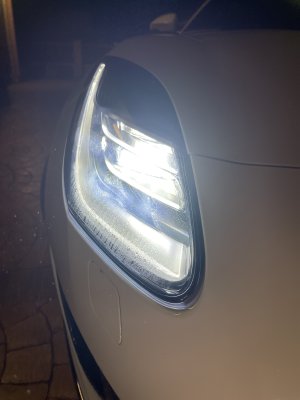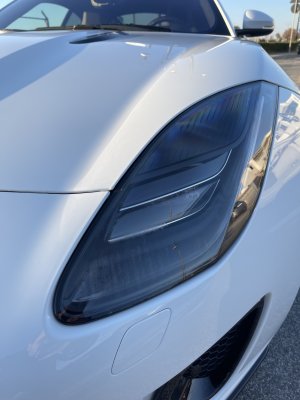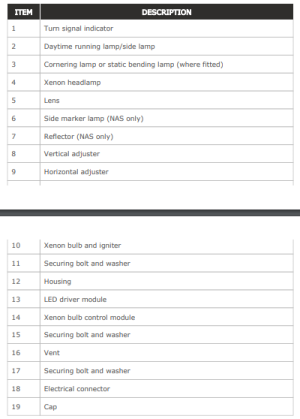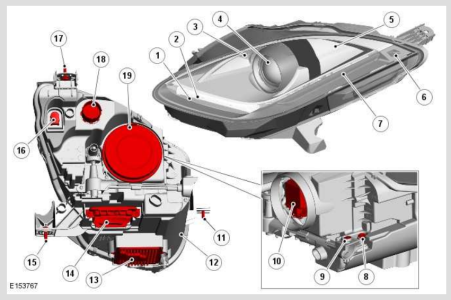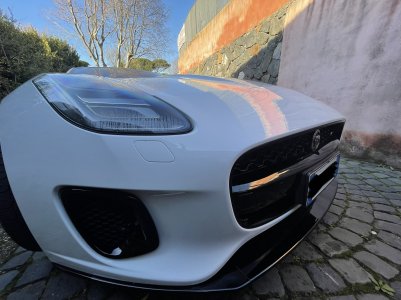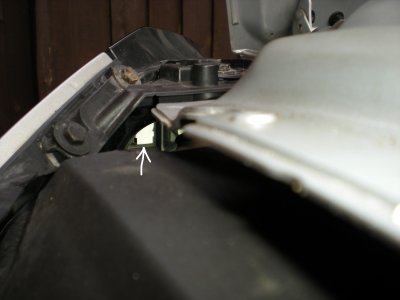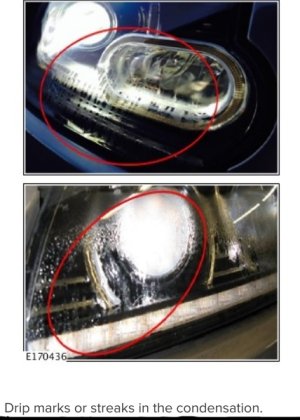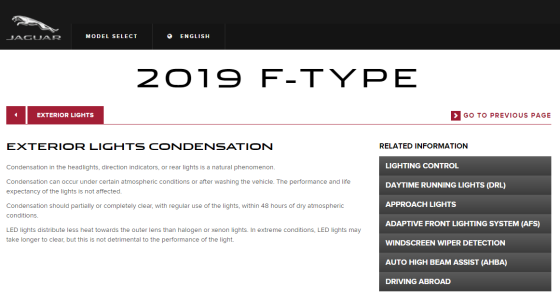giusemanuel said:
Thank you very much for your reply RPSN. In my case condensation appear even if it doesn't rain and if I don't wash the car and it happens practically every day that I take it in this period with low temperatures.
it is really exaggerated how much humidity accumulates inside the headlights.
This photos are taken on friday:
D88251AC-5539-454D-A283-FEB7F9893224.jpeg
3DDA4004-CF20-4DDE-8907-6E33BCF627D9.jpeg
I have full led headlights, know you if the vents is on the same position?
I took a look and did not see any cap.

The JLR TOPIx information I have is based on the Xenon headlamps. It says this.....”Condensation or moisture can be more noticeable during the months of spring and autumn when there is a likelihood of a higher moisture content in the air. Condensation will clear when the lights have been on for some length of time and in warmer ambient temperatures.”
“A lamp that exhibits condensation should be evaluated after a drying time where all the functions have been operated for a minimum of 30 minutes. If the condensation has started to clear during this time it indicates that the lamp sealing has NOT been breached and will eventually clear. The lamp must NOT be replaced.”
“Pools of water and high levels of condensation would indicate that the lamps sealing has been compromised. Check for damage and inspect the condition of caps and breathers.”
“Make sure that bulb covers are correctly installed and make sure that all breathers (tubes or membrane patches) are free from dirt and debris and are fitted correctly as these can all lead to the formation of condensation. If any of these are determined to be the cause of the condensation, measures should be taken to dry out the lamps and to make sure that the bulb covers are installed correctly.”
The 'bulb covers' being referred to are the rubber caps that are shown and listed in the previous diagram I attached.
Information on drying out the Xenon headlamps is contained in the link I posted earlier https://www.ftypeforums.co.uk/viewtopic.php?f=27&t=2805. Most of it doesn't apply to the LED headlamps but the topic
also shows a successful warranty claim for headlamp condensation which you may be interested in?
The Jaguar Technical Bulletins I provided give examples of ‘abnormal exterior lamp condensation that may be covered by warranty’. It says.....”In the photographs shown below,
note the drip marks or streaks in the condensation.” Looking at all your photos, I’d say the condensation in your car’s headlamps could be in this category?
Although you’re just outside the 3 year manufacturer’s warranty, it’s worth showing the issue (along with the Technical Bulletin) to the main dealer to see what they say?
Out of curiosity, do you regularly use the headlights as this should help to clear the condensation?
I’m not familiar with the LED headlamp assembly so if you can’t see the rubber caps and breather vents at the rear, it looks like they don’t have them? The vents on my Xenon headlamps (one at the rear of each lamp) are quite difficult to see due to their location, but I’ve managed to take a few pics.
What I will say is that I’ve also seen condensation on my car’s headlamps which is similar to yours but it clears over a period of time. At the moment we have cold/damp weather here in the UK and no condensation is visible in them, even though I keep the car outside in the elements.
I’ve attached a screenshot from https://www.ownerinfo.jaguar.com/ showing information on the 2019 F-Type Exterior Lights Condensation. Have a look at this before deciding on which course of action to take? It includes......"Condensation should partially or completely clear, with regular use of the lights, within 48 hours of dry atmospheric conditions."
I’ve also attached the JLR TOPIx pics showing the ‘abnormal exterior lamp condensation’ (drip marks or streaks), and a few pics of my car’s near/passenger side (UK) Xenon headlamp vent.
